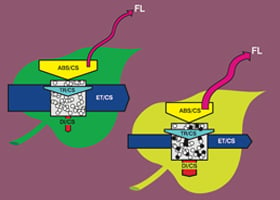Understanding the Photosynthesis Process Using Chlorophyll Fluorescence
A special issue of Cells (ISSN 2073-4409).
Deadline for manuscript submissions: closed (15 May 2022) | Viewed by 35736

Special Issue Editor
Interests: fluorescence sensors; chlorophyll fluorescence analysis; photochemistry of photosynthesis; plant stress; physiology of plants and algae; plant talk and machine learning
Special Issues, Collections and Topics in MDPI journals
Special Issue Information
Dear Colleagues,
Photosynthesis is the most important process on Earth, not only for plants but for all living organisms. Understanding the nature of this process is crucial because only by understanding photosynthesis can we control it. Many methods have been used at different structural, functional, and spatial levels to better understand the mechanisms that determine the performance of photosynthetic apparatus, especially under unfavorable growth conditions. Currently, chlorophyll fluorescence measurement is considered to be one of the most prevalent tools used in this area. The objective of this Special Issue of Cells is to review the current state of understanding and highlight recent advances in the process of photosynthesis at the cellular level.
Original research and review papers related to the photosynthesis process at the cellular level are greatly appreciated. The 10 manuscripts accepted first will have a 50% discount on the Article Processing Charge (APC), i.e., the author will pay only 1000 CHF (instead of 2000).
Prof. Hazem M. Kalaji
Guest Editor
Manuscript Submission Information
Manuscripts should be submitted online at www.mdpi.com by registering and logging in to this website. Once you are registered, click here to go to the submission form. Manuscripts can be submitted until the deadline. All submissions that pass pre-check are peer-reviewed. Accepted papers will be published continuously in the journal (as soon as accepted) and will be listed together on the special issue website. Research articles, review articles as well as short communications are invited. For planned papers, a title and short abstract (about 100 words) can be sent to the Editorial Office for announcement on this website.
Submitted manuscripts should not have been published previously, nor be under consideration for publication elsewhere (except conference proceedings papers). All manuscripts are thoroughly refereed through a single-blind peer-review process. A guide for authors and other relevant information for submission of manuscripts is available on the Instructions for Authors page. Cells is an international peer-reviewed open access semimonthly journal published by MDPI.
Please visit the Instructions for Authors page before submitting a manuscript. The Article Processing Charge (APC) for publication in this open access journal is 2700 CHF (Swiss Francs). Submitted papers should be well formatted and use good English. Authors may use MDPI's English editing service prior to publication or during author revisions.
Keywords
- abiotic and biotic stresses
- electron transport chain
- expression of photosynthesis-related genes
- light-dependent reactions
- light-harvesting complex
- oxidation/reduction (Redox) reactions
- photosynthetic pigments
- photosystem I and II
- prompt, delayed, modulated, solar or sun-induced, and laser-induced chlorophyll fluorescence
- signal transduction pathways






